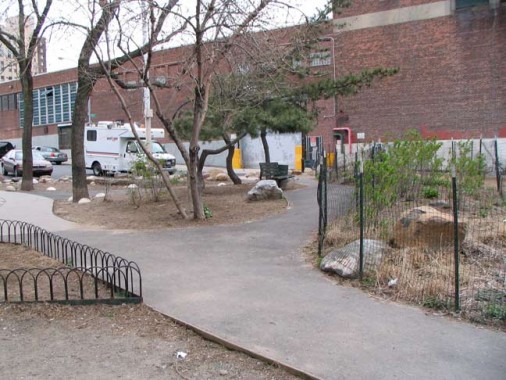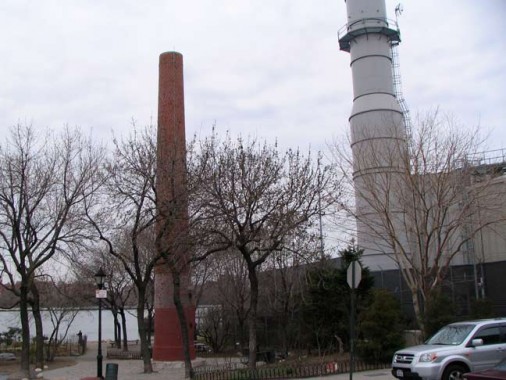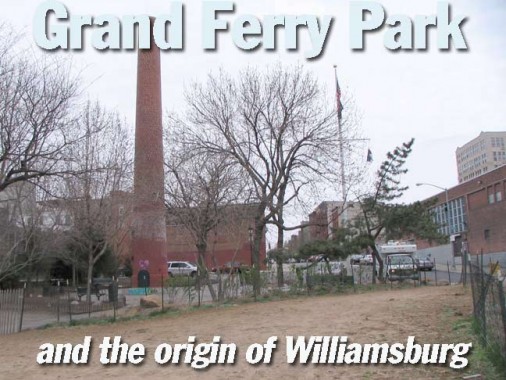Tucked away at the west end of Grand Street where it meets the East River and punctuated by a tall smokestack you’ll find a small oasis that indirectly remembers the founder of Williamsburg, once a city on its own before being absorbed by Brooklyn in 1855.
Williamsburg grew out of a ferry service instituted in 1802 by entrepreneur Richard Woodhull between what became Metropolitan Avenue and Corlear’s Hook, Manhattan, at the bend in the East River just south of where Manhattan’s Grand Street meets the river. Soon after that the Wiliamsburg and Jamaica Turnpike, originally a toll road, began carrying traffic from the river to the town of Jamaica; that road evolved into Metropolitan Avenue.
Shortly after, Woodhull purchased 13 acres of territory from farmer Charles Titus near the ferry and named it after his surveyor, Colonel Jonathan Williams, a grandnephew of Benjamin Franklin. Today, Woodhull is remembered by Woodhull Hospital at Broadway and Flushing Avenues, though he went bankrupt in 1806. Service continued until 1918, fifteen years after the Williamsburg Bridge opened.
Forgotten Fan John Dereszewski, in Comments:
The Grand St. park marks the site of the ferry that was established by Thomas Morell just after the turn of the 19th century. Morell established a community called Yorkton, which proved to be successful. At the same time, Woodhull established a ferry and the Williamsburg community a few blocks north where Metropolitan Ave. reaches the river. Unlike Yorkton, it went bankrupt. However, the name caught on while Yorkton did not. In addition, the original layout of Williamsburg, with its north and south sides flanking Grand St. was the work of Morell, who is definitely the most neglected founder of Williamsburg. (A street was named after him in what is now East Williamsburg, but it was first partially incorporated into a portion of Bushwick Ave. and the remaining segment was eliminated by the construction of Bushwick-Hylan Houses.)

What became Grand Ferry Park opened as an informal open space in 1974, but it took 23 years until NYC Parks formalized the arrangement and anointed it as a public park.

The park is notable for its 70-foot brick smokestack. It was constructed by Pfizer Chemical Co. to process molasses, which aided in the manufacture of penicillin. The brick pavement stones surrounding the smokestack were salvaged by Parks from Grand Street itself.
Boulders at the park’s edge at the waterline, called riprap, protect the park paths from erosion. The paths provide excellent views of the Williamsburg Bridge and the Manhattan Bridge in the distance.
Though a trench diverts rainwater into the river, stopping it from overflowing in the park, this had the unfortunate side effect of diverting toxic chemicals into the river. All things considered, though, NYC’s major waterways are much cleaner now than they’ve been for decades, though smaller ones such as Gowanus Canal and Newtown Creek will take decades, if not the greater part of a century, to bring back to any semblance of cleanliness.
1/15/13
